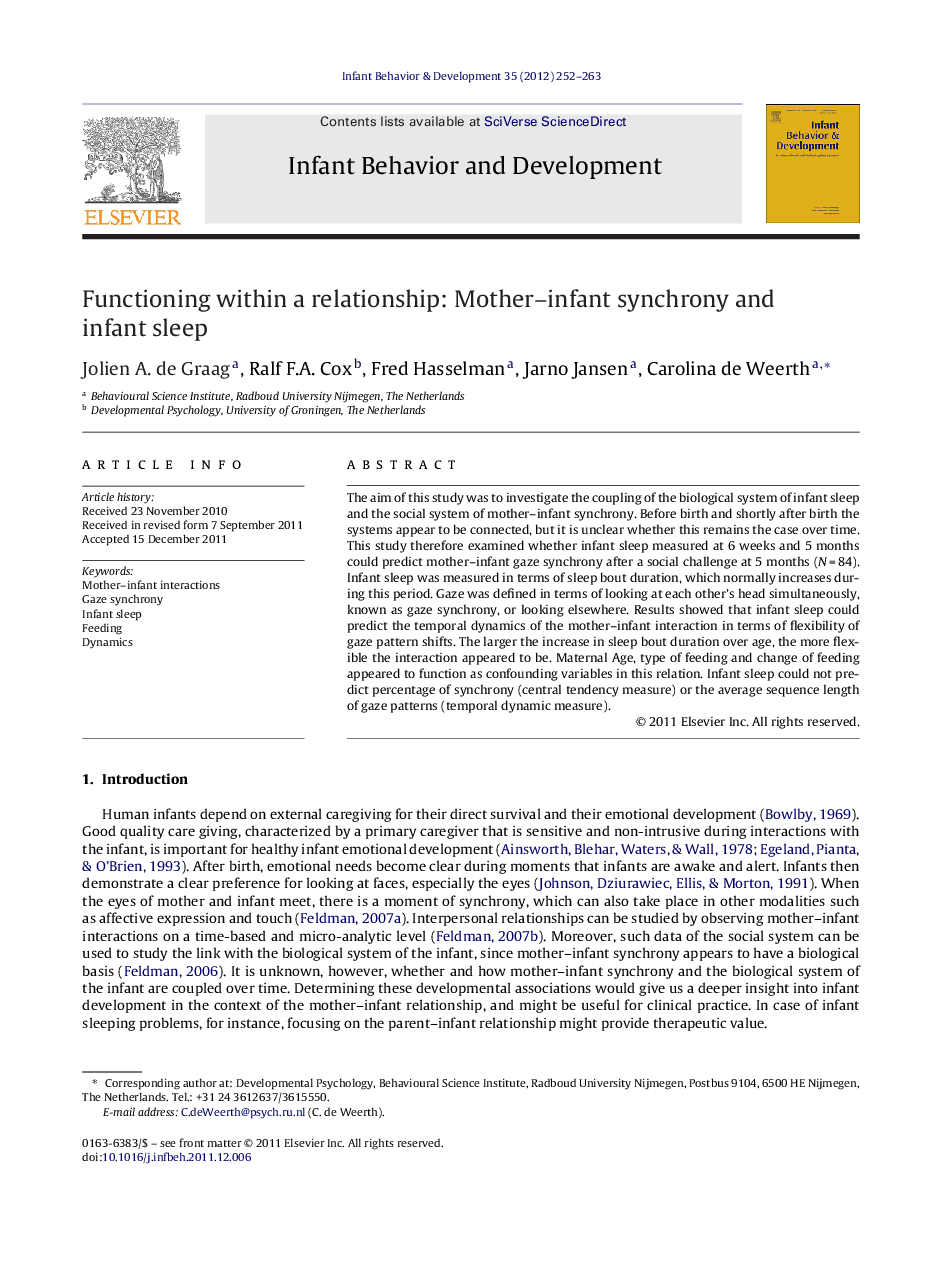| کد مقاله | کد نشریه | سال انتشار | مقاله انگلیسی | نسخه تمام متن |
|---|---|---|---|---|
| 917447 | 919269 | 2012 | 12 صفحه PDF | دانلود رایگان |

The aim of this study was to investigate the coupling of the biological system of infant sleep and the social system of mother–infant synchrony. Before birth and shortly after birth the systems appear to be connected, but it is unclear whether this remains the case over time. This study therefore examined whether infant sleep measured at 6 weeks and 5 months could predict mother–infant gaze synchrony after a social challenge at 5 months (N = 84). Infant sleep was measured in terms of sleep bout duration, which normally increases during this period. Gaze was defined in terms of looking at each other's head simultaneously, known as gaze synchrony, or looking elsewhere. Results showed that infant sleep could predict the temporal dynamics of the mother–infant interaction in terms of flexibility of gaze pattern shifts. The larger the increase in sleep bout duration over age, the more flexible the interaction appeared to be. Maternal Age, type of feeding and change of feeding appeared to function as confounding variables in this relation. Infant sleep could not predict percentage of synchrony (central tendency measure) or the average sequence length of gaze patterns (temporal dynamic measure).
► We investigated the coupling of infant sleep with mother–infant gaze synchrony.
► A dynamic systems perspective was used to analyze synchrony of gaze patterns.
► Larger increases in sleep bout duration over age predicted more flexible patterns.
► Feeding type and changes in feeding influenced this relation.
► The infant biological system appears to underlie the mother–infant social system.
Journal: Infant Behavior and Development - Volume 35, Issue 2, April 2012, Pages 252–263